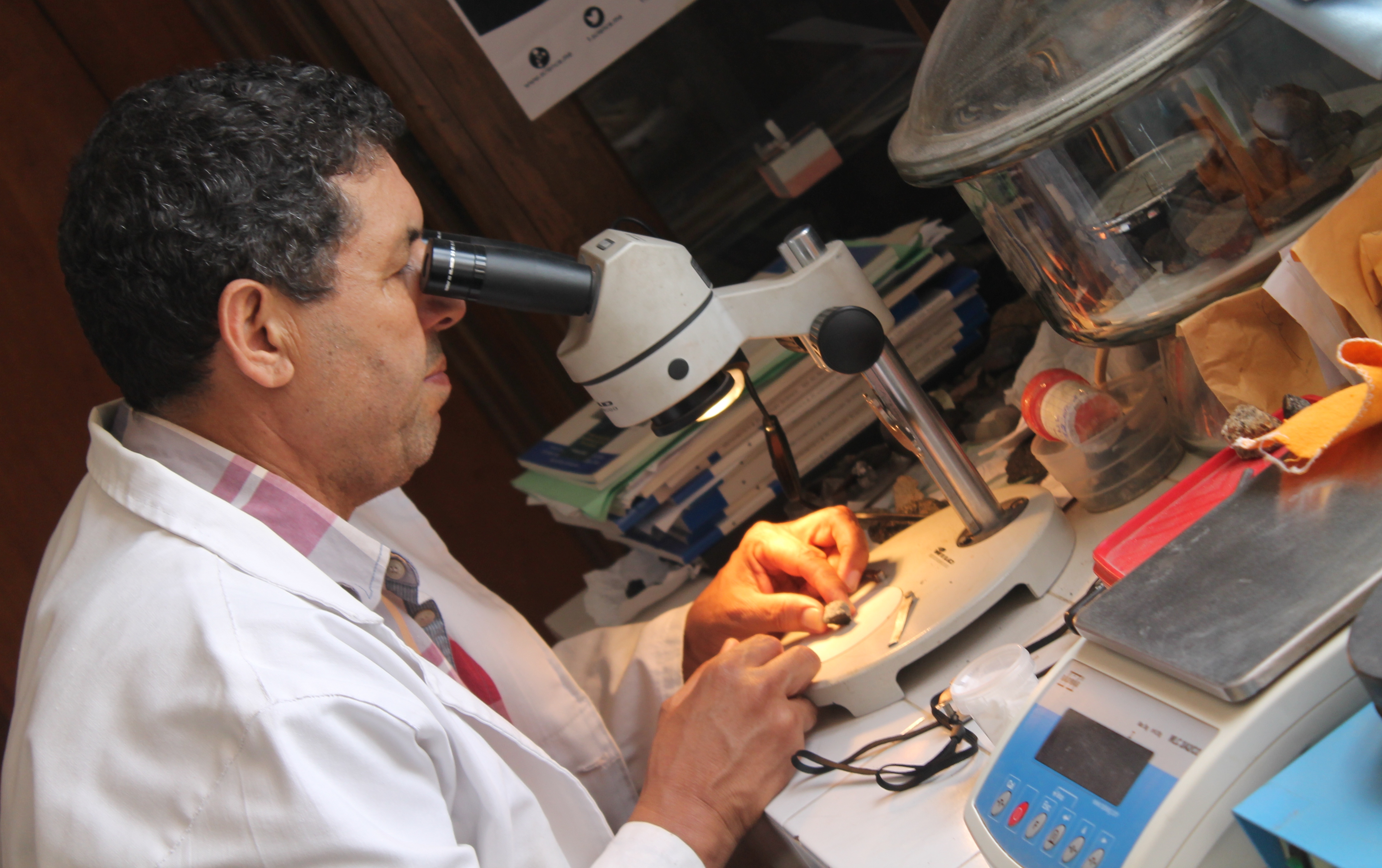On the evening of July 12, 2017, at 22:10 UT, a very bright fireball was observed by thousands of eyewitnesses in an area 140 km to the south of the town of Tata, in the rural community of Ait Ouabelli, in southeastern Morocco. It was described as brigher than a welding light. The fireball traveled from North to South and experienced several fragmentation events along its atmospheric trajectory. A terminal fragmentation and accompanying sound phenomena were observed near the end point of the trajectory. The search for meteorites started almost immediately after the fall. The largest fragment found thusfar was reported as weigthing 1 kg, but most fragments where small.
 Igdi meteorite fragment showing an intact black fusion crust. Credit: Abderrahmane Ibhi, Ibn Zohr University
Igdi meteorite fragment showing an intact black fusion crust. Credit: Abderrahmane Ibhi, Ibn Zohr UniversityA fragment of the Igdi 2 meteorite—as it provisionally named—of about 20 mm in diameter and 15 mm thick was presented to researchers at the Ibn Zohr University in Agadir. The provisional analysis pointed out that this an LL6-7 ordinary chondrite with shock stage S2-3 and a weathering grade of W0.

This extraordinary and rare event is extremely valuable to the scientific community as it is the brightest and most comprehensively observed fireball in Morocco’s astronomical history.
Authors of the article: Abderrahmane Ibhi, Fouad Khiri, and Lahcen Ouknine




 You saw something bright and fast? Like a huge shooting star? Report it: it may be a fireball.
You saw something bright and fast? Like a huge shooting star? Report it: it may be a fireball.  You counted meteors last night? Share your results with us!
You counted meteors last night? Share your results with us!  You took a photo of a meteor or fireball? You have a screenshot of your cam? Share it with us!
You took a photo of a meteor or fireball? You have a screenshot of your cam? Share it with us!  You caught a meteor or fireball on video? Share your video with us!
You caught a meteor or fireball on video? Share your video with us!